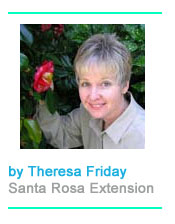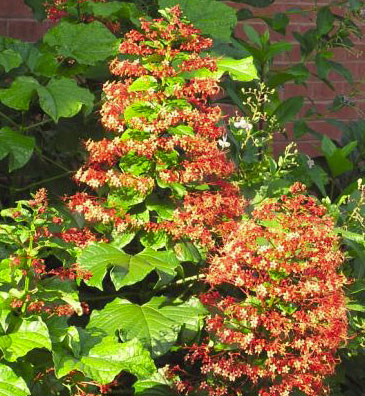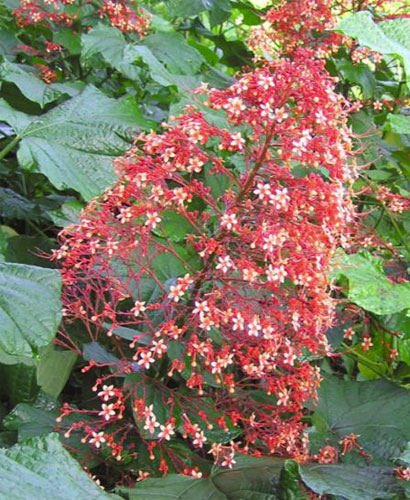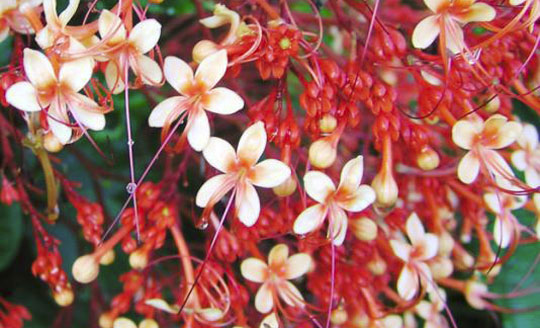Weekend Gardening: Irresistible Hummingbird Plants
September 16, 2012
This time of year, it’s nice to be able to sit outside on the cooler afternoons and enjoy the antics of the hummingbirds.
 For many people, attracting hummers is as easy as hanging a feeder. But, that is not always successful because many hummingbirds are not accustomed to using feeders. I know from experience how frustrating it can be to put out a feeder and never see a hummingbird.
For many people, attracting hummers is as easy as hanging a feeder. But, that is not always successful because many hummingbirds are not accustomed to using feeders. I know from experience how frustrating it can be to put out a feeder and never see a hummingbird.
Numerous people have found that planting a garden full of hummingbird-attracting plants, in addition to maintaining feeders, is a more reliable method for successfully attracting hummingbirds.
One plant that is sure to attract the hummingbirds and the “oohs and ahhs” of fellow gardeners is the pagoda plant. The flowers grow in pyramid shaped clusters which are tiered, like a Japanese pagoda, thus its common name. This sizeable floral display sitting atop large leaves makes this such a visually-striking plant.
The red-orange flowers are funnel shaped and tubular, making it irresistible to the hummingbirds. Each slender, tubular flower is about a half-inch long with five small lobes, these usually being slightly paler than the tube.
 Butterflies are the main pollinators. As they extend their long, thin proboscides into the flower tubes pollen adheres to their bodies from the long protruding stamens. Flowers of cultivated plants are usually sterile and typically do not produce fruits.
Butterflies are the main pollinators. As they extend their long, thin proboscides into the flower tubes pollen adheres to their bodies from the long protruding stamens. Flowers of cultivated plants are usually sterile and typically do not produce fruits.
The pagoda flower is one of about 150 species of Clerodendrum, a large genus which is native to Africa and Asia. Known botanically as Clerodendrum paniculatum, it was first described in 1767 by the ‘father’ of modern biological nomenclature – the Swedish botanist, Carl Linnaeus. The species epithet refers to the large ‘paniculate’ clusters of flowers (inflorescences).
The leaves of the pagoda plant are bright green, rounded to heart-like in shape and can get very large. The shrub has an open branching habit and can grow up to eight feet tall. Their ability to produce root suckers allows pagoda flowers to spread vegetatively and they can form clonal stands of several plants together. Although an aggressive plant, it is not as invasive as other species of Clerodendrum.
It grows best in partial sun to light shade and prefers a moist, but well-drained soil. It does well with minimal fertilizer and requires little care. Insects may occasionally chew on the foliage, but this plant really has no major insect or disease problems. Plants grow rapidly and send up shoots that might need removal during the growing season.
 The one shortcoming of this plant is that it is tender and will die back with a freeze. While it has returned reliably over several years in Northwest Florida, some years it takes a very long time to reappear the following summer. Be sure to remove the freeze-damaged foliage, or cut back to the ground entirely, only after you see new shoots begin to appear in the spring. This is one plant that I would suggest that you remove some rooted underground shoots and pot up to overwinter in a protected location.
The one shortcoming of this plant is that it is tender and will die back with a freeze. While it has returned reliably over several years in Northwest Florida, some years it takes a very long time to reappear the following summer. Be sure to remove the freeze-damaged foliage, or cut back to the ground entirely, only after you see new shoots begin to appear in the spring. This is one plant that I would suggest that you remove some rooted underground shoots and pot up to overwinter in a protected location.
Be patient if you don’t see hummingbirds the first year. Remember, a hummingbird garden is an invitation to these delightful creatures, not a command performance. The longer you stick with it the more likely they are to show up.
Theresa Friday is the Environmental Horticulture Extension Agent for Santa Rosa County.
Comments
2 Responses to “Weekend Gardening: Irresistible Hummingbird Plants”




I am also happy to find the name of this plant. I bought it after Hurricane Irma. It grew really quick and if very large. Can I trim it down a bit? It has the orange flowers all over it and never has stopped blooming. I live in South Florida Zone 11. Thank you for all your help.
I am so happy my cousin found this page to send to me. I have this plant and have been trying to find out what it is for a long time!! Thanks for the great information and pictures!!!